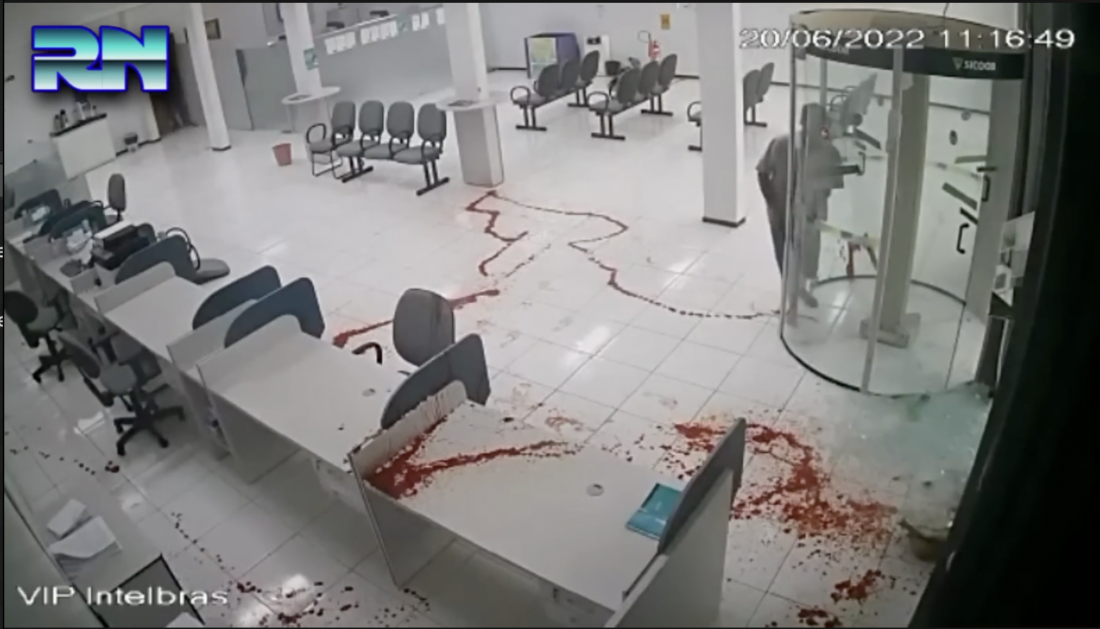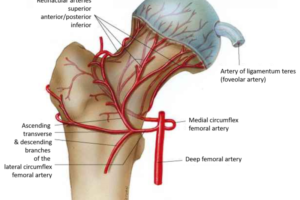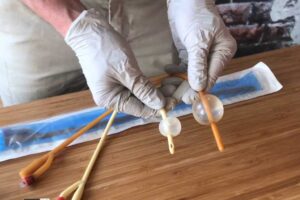
Brazilian Bank Robbery: Lethality of penetrating neck wounds
🕖 Reading Time, 4 minutes
This video of an attempted bank robbery in Brazil shows that some injuries are just too rapidly fatal to intervene on.
Based on Vietnam data, fatal penetrating neck wounds result from about 1/3 transection of the casualty’s airway anatomy, 1/3 severing of the cervical spinal cord, and about 1/3 laceration of neck blood vessels. Based on the obvious spurting blood in the video, his neck wound was responsible for his collapse about thirty seconds after wounding.
•Transection of his airway anatomy likely wouldn’t have resulted in his collapse that rapidly, and he doesn’t seem to have much obvious difficulty breathing as he moves around the bank lobby.
•A severed cervical spinal cord would have caused his collapse immediately.
•Therefore, it seems obvious that his fatal wound was probably a gunshot wound to his carotid artery.
According to the Vietnam WDMET database1, here is the more detailed data on casualties with penetrating neck wounds: 6% of 500 consecutive autopsies of American Servicemen who died during the Vietnam war had fatal neck wounds.
- 26% had a transection of their larynx / trachea,
- 22% laceration of neck blood vessels,
- 13% severed cervical spinal cord, and
- 30% combined fatal neck injuries.
- In the remaining 9% of WDMET casualties with fatal neck wounds, the exact injury wasn’t noted.
WDMET database
We’ve used the WDMET database1 because a recent publication describing treatment of penetrating neck injuries during the Iraq and Afghanistan conflicts acknowledged “information on those killed in action and not surviving to a MTF could not be accurately obtained form the US data.”2 Another study from Vietnam3 showed 7.3% of fatalities were from neck wounds, whereas data from the Korean conflict claimed 3%4.Of 1008 casualties with non-thoracic vascular wounds treated by a vascular surgeon during the Lebanese War, 8.8% involved the common, internal, or external carotid injuries.5
Another advantage of the Vietnam data is that those US soldiers and Marines were not wearing ballistically rated body armor, flak vests infrequently stopped bullets, which perhaps makes the results more generalizable to a civilian population. The Lebanese casualty data included 38% civilians. Even many of the 62% who were military were irregular forces and at best had no ballistically rated armor either.
TRAIN NOWOnline Tactical Casualty Care Classes
NOTES:
1Evaluation of Wound Data and Munitions Effectiveness in Vietnam, Volume 1, Dec 1970
2Breeze J, Bowley DM, Combes JG, Baden J, Orr L, Beggs A, DuBose J, Powers DB. Outcomes following penetrating neck injury during the Iraq and Afghanistan conflicts: A comparison of treatment at US and United Kingdom medical treatment facilities. J Trauma Acute Care Surg. 2020 May;88(5):696-703. doi: 10.1097/TA.0000000000002625. PMID: 32068717; PMCID: PMC7182242.
3Maughon JS. An inquiry into the nature of wounds resulting in killed in action in Vietnam. Mil Med. 1970 Jan;135(1):8-13. PMID: 4985194.
4Silliphant, WM and Beyer, JC, Wound Ballistics. Mil Med. 1954 113:238-246
5Zakharia AT. Cardiovascular and thoracic battle injuries in the Lebanon War. Analysis of 3,000 personal cases. J Thorac Cardiovasc Surg. 1985 May;89(5):723-33. PMID: 3990322.




2 Comments
Funny, we’ve never heard a revolving door referred to that way, but you’re right.
So this guy died in a tourniquet door ! Quite a symbol there …